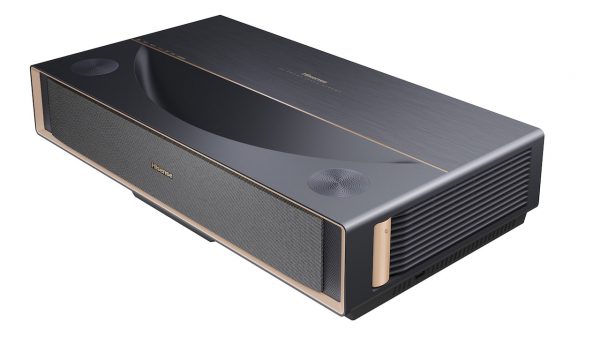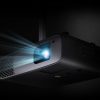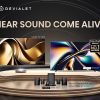Video projectors offer a very different viewing experience than TVs, but that also comes with a few more steps to get the image setup properly on the screen; and that’s even before you conduct a proper calibration of the projector which is mandatory to maximize your investment. WTF is lens shift? Glad you asked.
Part of that process is lining up the projector with a screen or wall so that it is perpendicular and produces the image at the right angle and height.
Focus and zoom controls are provided on most projectors that allow you to manage the size and sharpness of the projected image. The adjustable feet on most projectors also help adjust the angle of the projector a small amount to the screen/wall.
If you have a ceiling-mounted projector you should be able to adjust the angle of the ceiling mount. Some projectors also include auto-flip which detects if the projector is right side up or when mounted on a ceiling, upside down. Instead of going into the projector’s setting menu, the projector may automatically flip the image so that is always right-side up in relation to the viewer.
However, you may need to make additional adjustments to place the image in the right position that lines up with the screen/wall and/or correct for problems with geometry (shape) and angle.
Tools that may be available to you might be Lens Shift and Keystone Correction. For more details on Keystone Correction, refer to our article: WTF is Keystone Correction?
In this article, we discuss the lens shift option. Lens Shift addresses image placement on a screen or wall. For example, you might find that the image is too high or low, or too far to the left or right to fit within your screen or wall area.

How Lens Shift Works
Lens shift allows you to physically move the projector’s lens assembly up, down, side-to-side, or diagonally without moving the projector.
Tip: Depending on the brand/model of the projector, not all three movement options are provided. A projector may only provide up/down (vertical), both vertical and side-to-side (horizontal), or, in select cases, diagonal lens shift capability.
Projectors with lens shift include space inside the lens assembly so that physical movement is allowed while not blocking the entire image from being displayed. This adds more flexibility for repositioning the image on the screen.
Depending on the brand/model of the projector, lens shift is may be executed using a physical knob or dial. However, knobs or dials on the projector are inconvenient if you have a ceiling-mounted projector.
Some high-end projectors provide motorized lens shift that allows users to adjust the lens position via both buttons on the projector and through the remote control.
As mentioned previously, when executing lens shift, you may be able to move the picture vertically up or down, horizontally side to side, or even diagonally. As a result, the top of the image may be moved to where the center of the image used to be. All this can be done without necessarily having to move the projector from its placement distance or position in relation to the screen (pending screen size, zoom, and focus).
The degree of lens shift available depends on the brand/model of the projector. For example, a projector may provide vertical or vertical/horizontal movement of + or – 15 or 30%. In some cases, the vertical and horizontal movement range may be different – usually, the vertical lens shift option will have more range than the horizontal lens shift option.
Tip: If shopping for a projector, refer to the posted features/specifications on their online product page. If you own a projector, refer to the user guide.

Lens Shift vs Keystone Correction
It is important to point out that lens shift is not used to change the geometry (shape of the image), the entire displayed image is moved linearly. After using lens shift, if you need to find that you need to correct for geometric or angle irregularities, the next step would be to use the projector’s Keystone Correction feature.
Lens Shift: Allows physical lens movement to position the projected image at the right place on the screen or wall. There is no resolution or image quality loss.
Keystone Correction: Adjusts the angle and shape of the image projected on the screen or wall. There is predominantly a digital process and there may be resolution and picture quality loss.

Tip: UST Projectors typically don’t provide lens shift, but do provide Keystone Correction.
Related Reading
WTF is CIH (Constant Image Height) in Home Theater Projectors?
WTF is HDR (High Dynamic Range) for Video, TV, and Projectors?
WTF is a UST (Ultra Short Throw) Projector?


















































